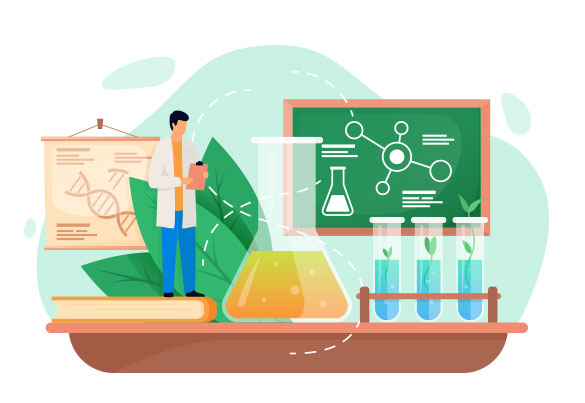3D Conformation Generation
Discovery of novel molecules with high bioactivity is challenging, time-consuming and costly. Generally, virtual screening methods can be basically divided into structure-based (SBVS) and ligand-based (LBVS) methods. Both of them play essential roles in the screening of millions of small molecules against targets of interest. SBVS usually applies docking and scoring techniques to align small molecules at protein binding sites, searching for shape and chemical complementarity. LBVS method, on the other hand, is developed on the basis of molecular similarity. VS requires suitable collections of compounds to support the in silico screening approach. For example, in rigid ligand docking or 3D ligand-based screening experiments, multiple conformational isomer assemblies are also required. Scientists are searching for different strategies to generate accurate 3D structures for small compounds to design the virtual library.
BOC Sciences provides fast and automated access to generate 3D structures of small drug-like molecules to help prepare compound collections for high-throughput virtual screening campaigns. Our team is able to generate conformational models with reliable energy, rigid structures and torsional angle structures.
 Figure 1. The 3D conformation of seven reported pathogenic mutation sites located in the first ‘Greek Key’ module domain of CRYGD. (Li, B.; et al. 2020)
Figure 1. The 3D conformation of seven reported pathogenic mutation sites located in the first ‘Greek Key’ module domain of CRYGD. (Li, B.; et al. 2020)
3D Conformation Generation Method
- Rule-based approach (basically a structured data-based approach)
- Data-based approach
- Purely random method
- Multi-objective genetic algorithm (GA) method
3D Conformation Generation Process
BOC Sciences has proposed a new tool that uses distance geometry and automated molecular mechanics optimization to generate individual 3D conformations for small drug-like molecules, thus constructing reliable virtual libraries. Our method is as follows:
- Topological (2D) structure of the molecule is set as the input
- We use the Gauss-Siedel distance geometry (GSDG) that takes into account bonds, angles, hybrid torsions and non-bonded points of atomic electrostatic and van der Waals potentials
- The initial structure is then corrected by molecular mechanics minimization to produce structures with good geometry and self-avoidance
- The conjugate gradient method is used in combination with the AMMP force field sp4 to produce structures with reasonable bond lengths and valence angles
- We also apply the Gasteiger-Marsili method to assign atomic partial charges
- Calculation of the charge of small molecules at physiological pH
- Prepare 3D conformational sets of compounds prior to high-throughput virtual screening
Merits of the Generated 3D Conformation
- Diversity of molecules in terms of size and flexibility
- Good energy values
BOC Sciences provides professional, rapid and high-quality services of 3D Conformation Generation at competitive prices for global customers. Personalized and customized services of 3D Conformation Generation can satisfy any innovative scientific study demands. Our clients have direct access to our staff and prompt feedback to their inquiries. If you are interested in our services, please contact us immediately!
Reference
- Li, B.; et al. Two Pathogenic Gene Mutations Identified Associating with Congenital Cataract and Iris Coloboma Respectively in a Chinese Family. Journal of Ophthalmology. 2020(4): 1-9.
